 Capcom releases the arcade video game Vulgus, a fast-paced coin-op shoot-’em-up.
Capcom releases the arcade video game Vulgus, a fast-paced coin-op shoot-’em-up. ![]()

 Capcom releases the arcade video game Vulgus, a fast-paced coin-op shoot-’em-up.
Capcom releases the arcade video game Vulgus, a fast-paced coin-op shoot-’em-up. ![]()
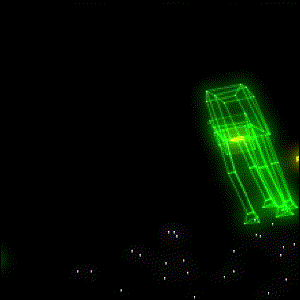 Atari releases the arcade video game The Empire Strikes Back, based on the movie of the same name; this is a conversion kit allowing arcade operators to freshen aging Star Wars coin-ops with new levels and game elements.
Atari releases the arcade video game The Empire Strikes Back, based on the movie of the same name; this is a conversion kit allowing arcade operators to freshen aging Star Wars coin-ops with new levels and game elements. ![]()
 Mindscape releases the educational computer game The Halley Project for the Apple II home computer system, designed by Omar Khudari and Tom Snyder. The game’s release is timed to coincide with increasing public awareness of the upcoming appearance of Halley’s Comet in 1986.
Mindscape releases the educational computer game The Halley Project for the Apple II home computer system, designed by Omar Khudari and Tom Snyder. The game’s release is timed to coincide with increasing public awareness of the upcoming appearance of Halley’s Comet in 1986. ![]()
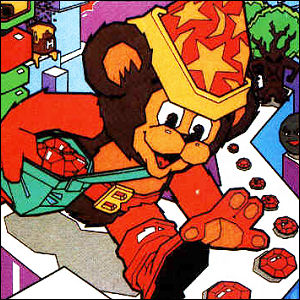 Atari releases a port of Crystal Castles for the Atari VCS, a home version of Atari’s graphically elaborate coin-op game.
Atari releases a port of Crystal Castles for the Atari VCS, a home version of Atari’s graphically elaborate coin-op game. ![]()
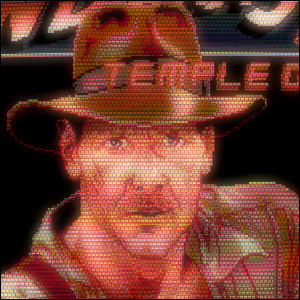 Atari releases the arcade game Indiana Jones and the Temple of Doom in the United States, giving players the chance to hate pixellated snakes from a safe distance.
Atari releases the arcade game Indiana Jones and the Temple of Doom in the United States, giving players the chance to hate pixellated snakes from a safe distance. ![]()
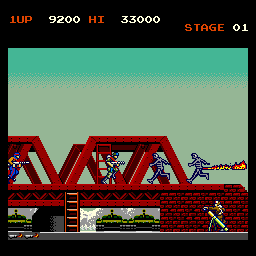 Konami introduces the arcade game Rush’n Attack in the United States, while the same game – with no changes to its hand-to-hand military fighting action – is released elsewhere as Green Beret.
Konami introduces the arcade game Rush’n Attack in the United States, while the same game – with no changes to its hand-to-hand military fighting action – is released elsewhere as Green Beret. ![]()
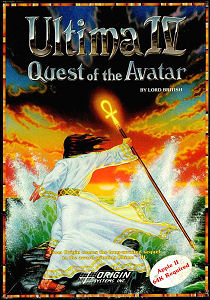 Origin Systems releases the role-playing game Ultima IV: Quest Of The Avatar for the Apple II home computer, the fourth in Richard Garriott’s Ultima series.
Origin Systems releases the role-playing game Ultima IV: Quest Of The Avatar for the Apple II home computer, the fourth in Richard Garriott’s Ultima series. ![]()
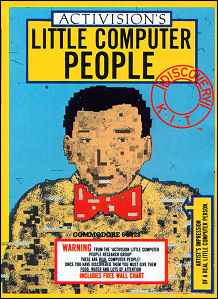 Electronic Arts releases the Little Computer People “discovery kit” for Commodore 64 home computers, enabling players to manage the “life” of a “Little Computer Person” residing within their home computer.
Electronic Arts releases the Little Computer People “discovery kit” for Commodore 64 home computers, enabling players to manage the “life” of a “Little Computer Person” residing within their home computer. ![]()
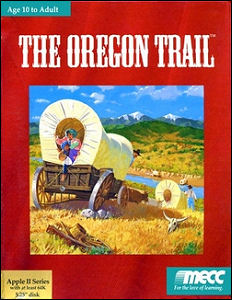 The Minnesota Educational Computing Corporation releases a new version of the perennial favorite educational computer game The Oregon Trail for the Apple II computer. Now featuring more action-based sequences than purely textual interactions, this version of The Oregon Trail is the most recognizable iteration of the game, which will be ported to numerous other computer systems.
The Minnesota Educational Computing Corporation releases a new version of the perennial favorite educational computer game The Oregon Trail for the Apple II computer. Now featuring more action-based sequences than purely textual interactions, this version of The Oregon Trail is the most recognizable iteration of the game, which will be ported to numerous other computer systems. ![]()
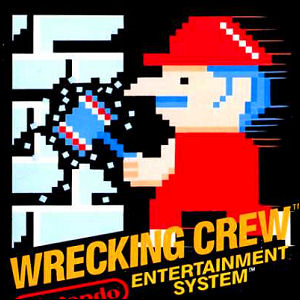 Nintendo releases Wrecking Crew for the Nintendo Entertainment System. Possibly the most obscure NES game to feature Mario, this is one of very few Mario games to continue the idea – established in Donkey Kong – that Mario is a construction worker rather than a plumber with super powers.
Nintendo releases Wrecking Crew for the Nintendo Entertainment System. Possibly the most obscure NES game to feature Mario, this is one of very few Mario games to continue the idea – established in Donkey Kong – that Mario is a construction worker rather than a plumber with super powers. ![]()
 Electronic Arts releases the game development toolkit Adventure Construction Set for the Apple II home computer, allowing users to design their own tile-based computer RPGs, defining characters, settings, weapons, magic use, and more.
Electronic Arts releases the game development toolkit Adventure Construction Set for the Apple II home computer, allowing users to design their own tile-based computer RPGs, defining characters, settings, weapons, magic use, and more. ![]()
 Mindscape releases RACTER for the Apple II home computer, a program originally promoted as an early example of artificial intelligence, but whose packaging claims it to be a parody of artificial intelligence.
Mindscape releases RACTER for the Apple II home computer, a program originally promoted as an early example of artificial intelligence, but whose packaging claims it to be a parody of artificial intelligence. ![]()
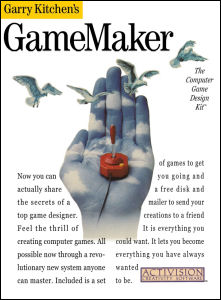 Activision releases the game development toolkit Garry Kitchen’s GameMaker for the Apple II home computer, allowing users to design their own computer games, including animated sprites, music, and more.
Activision releases the game development toolkit Garry Kitchen’s GameMaker for the Apple II home computer, allowing users to design their own computer games, including animated sprites, music, and more. ![]()
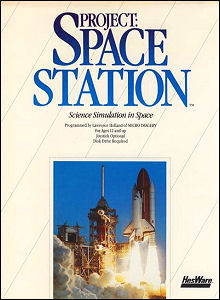 HESware releases the resource management game Project Space Station for the Apple II home computer, designed by Lawrence Holland (X-Wing vs. TIE Fighter). The game involves using a fleet of two space shuttles – Columbia and Challenger – to build the U.S. space station.
HESware releases the resource management game Project Space Station for the Apple II home computer, designed by Lawrence Holland (X-Wing vs. TIE Fighter). The game involves using a fleet of two space shuttles – Columbia and Challenger – to build the U.S. space station. ![]()